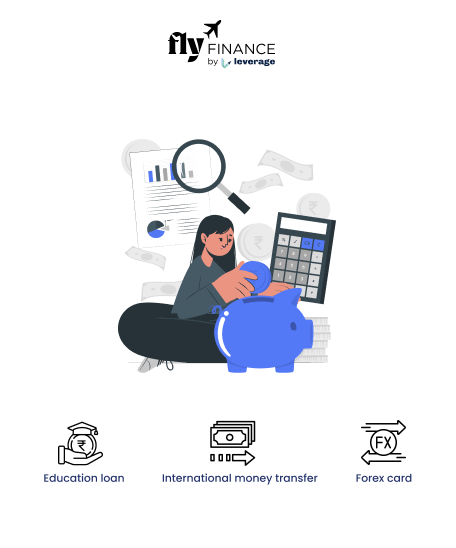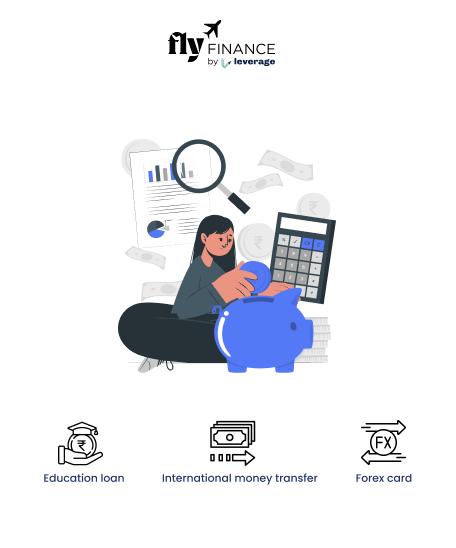In the dynamic world of foreign exchange, understanding the forward rate vs spot rate is crucial for making informed financial decisions. These concepts are pivotal in currency trading, international business, and investment planning.
This guide dives deep into the Forward Rate vs Spot Rate with their definitions, calculations, applications, and strategic uses of forward and spot rates, empowering you to navigate currency markets with confidence. Let’s get started!
Table of contents
What is the Difference Between Forward Rate and Spot Rate?
Understanding the distinctions between forward and spot rates is crucial for selecting the appropriate financial tool for your needs. The forward rate vs spot rate comparison revolves around timing, purpose, and risk exposure.
| Feature | Spot Rate | Forward Rate |
| Definition | Current rate for immediate exchange | Agreed rate for future exchange |
| Settlement Time | 1-2 business days | Specified future date (e.g., 1 month, 1 year) |
| Purpose | Instant currency conversion | Currency hedging against future rate changes |
| Calculation | Based on current market dynamics | Spot rate + interest rate differential |
| Risk Exposure | Subject to market volatility | Locks in rate, minimizing uncertainty |
Also Read: List of Top Foreign Exchange Companies in India 2025
Spot rates are used for immediate exchanges, while forward rates address future uncertainties. Below is a concise comparison of the forward rate vs the spot rate. Please take a look:
What is a Spot Rate?
The spot rate, also known as the spot exchange rate, is the current market price at which among currency pairs one currency can be exchanged for another, with settlement typically occurring within two business days (T+2). It reflects real-time market conditions, driven by factors like supply and demand, interest rates, and economic indicators.
For instance, on May 3, 2025, the USD/INR spot rate might be 83.75, meaning 1 USD can be exchanged for 83.75 INR instantly.
- Immediate delivery: Transactions settle within 1-2 business days, except for pairs like USD/CAD, which settle in one day.
- Market-driven: Influenced by economic data, central bank policies, and geopolitical events.
- High liquidity: Used in retail forex, international trade, and travel.
Spot rates are essential for businesses paying overseas suppliers or travelers exchanging currency for immediate use.
What is a Forward Rate?
A forward rate is a key term in the Forex glossary. It refers to an exchange rate agreed upon today for a currency transaction that will be settled on a specific future date, typically through a forward contract. It helps businesses and investors hedge against currency fluctuations.
The forward rate is calculated by adjusting the spot rate for the interest rate differential between the two currencies, ensuring alignment with future market expectations.
- Future settlement: Contracts can range from days to years, tailored to specific needs.
- Risk management: Shields against adverse currency movements, ensuring cost certainty.
- Customizable: Forward contracts specify amounts, dates, and rates.
For example, a company expecting to pay a foreign supplier in six months can use a forward rate to lock in today’s exchange rate, avoiding potential losses from rate volatility.
How is a Forward Rate Calculated?
The forward rate is derived from the spot rate, adjusted for the interest rate differential between the two currencies over the contract period. This ensures the rate accounts for the cost of holding the currencies until the settlement date. The formula is:
Forward Rate = Spot Rate × (1 + Interest Rate of Quote Currency × Time) / (1 + Interest Rate of Base Currency × Time)
- Spot rate: The current exchange rate (e.g., USD/INR = 83.75).
- Interest rate differential: The difference between the two currencies’ interest rates (e.g., U.S. at 5%, India at 7%).
- Time: The contract duration in years (e.g., 0.5 for six months).
Example: If the USD/INR spot rate is 83.75, the U.S. interest rate is 5%, the Indian interest rate is 7%, and the contract is for six months (0.5 years), the calculation is:
- Forward Rate = 83.75 × (1 + 0.07 × 0.5) / (1 + 0.05 × 0.5)
- Forward Rate = 83.75 × (1.035 / 1.025) ≈ 84.54
This forward rate (84.54) reflects the expected cost of exchanging USD for INR in six months, accounting for the higher Indian interest rate.
Practical Applications of Spot and Forward Rates
Both rates serve unique purposes across financial scenarios. Spot and forward rates cater to diverse needs, from everyday transactions to strategic financial planning. Their applications span industries and individual use cases, as outlined below:
- Spot Rate Applications:
- International payments: Businesses settle invoices for imported goods instantly.
- Travel and tourism: Individuals exchange currency for immediate use abroad.
- Speculative trading: Traders capitalize on short-term currency movements.
- Forward Rate Applications:
- Hedging currency risk: Exporters lock in rates to protect against unfavorable shifts.
- Investment planning: Investors secure rates for future capital repatriation.
- Cost predictability: Companies budget foreign currency expenses with certainty.
Real-World Example: A tech firm importing components from the U.S. uses the spot rate to pay for immediate shipments. To manage costs for a large order due in nine months, it enters a forward contract to lock in the USD/INR rate, ensuring stable pricing despite potential rupee depreciation.
Also Read: Travelex Currency Exchange: Delivery Options, Money Card
When to Use Spot Rate vs Forward Rate?
Choosing between spot and forward rates depends on your financial goals and risk tolerance.
The decision to use a forward rate vs spot rate hinges on the urgency of the transaction and exposure to currency fluctuations. Below are scenarios to guide your choice:
- Use Spot Rate When:
- You need immediate currency for payments or travel.
- Market conditions are favorable, and risks are minimal.
- The transaction is small, and volatility won’t significantly impact costs.
- Use Forward Rate When:
- You anticipate currency volatility (e.g., due to economic events).
- You need to budget for future foreign currency payments.
- Your business depends on predictable costs for international deals.
Tip: Monitor economic indicators like central bank policies or inflation trends to assess whether locking in a forward rate is advantageous.
Mastering the concepts of forward rate vs spot rate unlocks strategic opportunities in currency exchange and financial planning. Spot rates power immediate transactions, while forward rates safeguard against future uncertainties, offering stability in volatile markets.
FAQs on Forward Rate vs Spot Rate
The spot rate is for immediate currency exchange (settled in 1-2 days), while the forward rate is for future transactions, locking in a rate to hedge against volatility.
Yes, but forward contracts are more common among businesses and institutional investors. Individuals can access similar tools, like currency futures, through brokers.
The forward rate adjusts the spot rate based on the difference in interest rates between the two currencies, reflecting the cost of holding the currency pair over time.
Not necessarily. Forward rates may be higher or lower than spot rates, depending on the interest rate differential and market expectations.
A spot contract involves an agreement to exchange currencies at the current spot rate, with settlement typically occurring within 1-2 business days (T+2). It is used for immediate currency exchange needs, such as paying for imports or travel. In contrast, a forward contract is an agreement to exchange currencies at a predetermined forward rate on a specific future date, which can range from days to years. Forward contracts are primarily used to hedge against future currency fluctuations, providing cost certainty for businesses or investors planning future transactions.
The spot rate, also known as the spot exchange rate, is the current market price at which one currency can be exchanged for another, with settlement typically occurring within 1-2 business days. It reflects real-time market conditions, driven by supply and demand, interest rates, and economic indicators.
The forward rate is an exchange rate agreed upon today for a currency transaction that will settle on a specific future date, often through a forward contract. It is calculated by adjusting the spot rate for the interest rate differential between the two currencies over the contract period.
To learn more about bank accounts for students, the best education loans, forex, banking experience for global students, or international money transfers, reach out to our experts at 1800572126 to help ease your experience with studying abroad.
Follow Us on Social Media





























